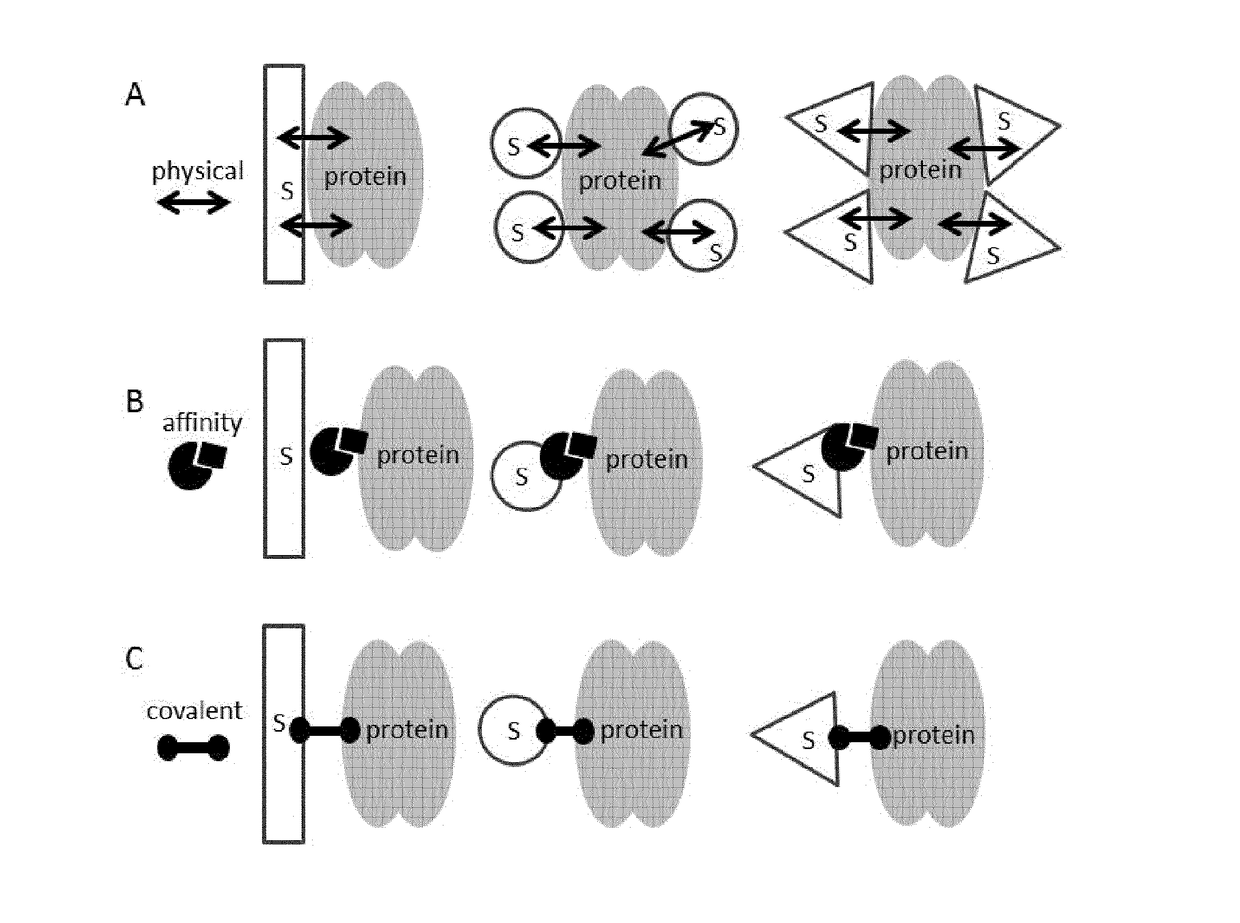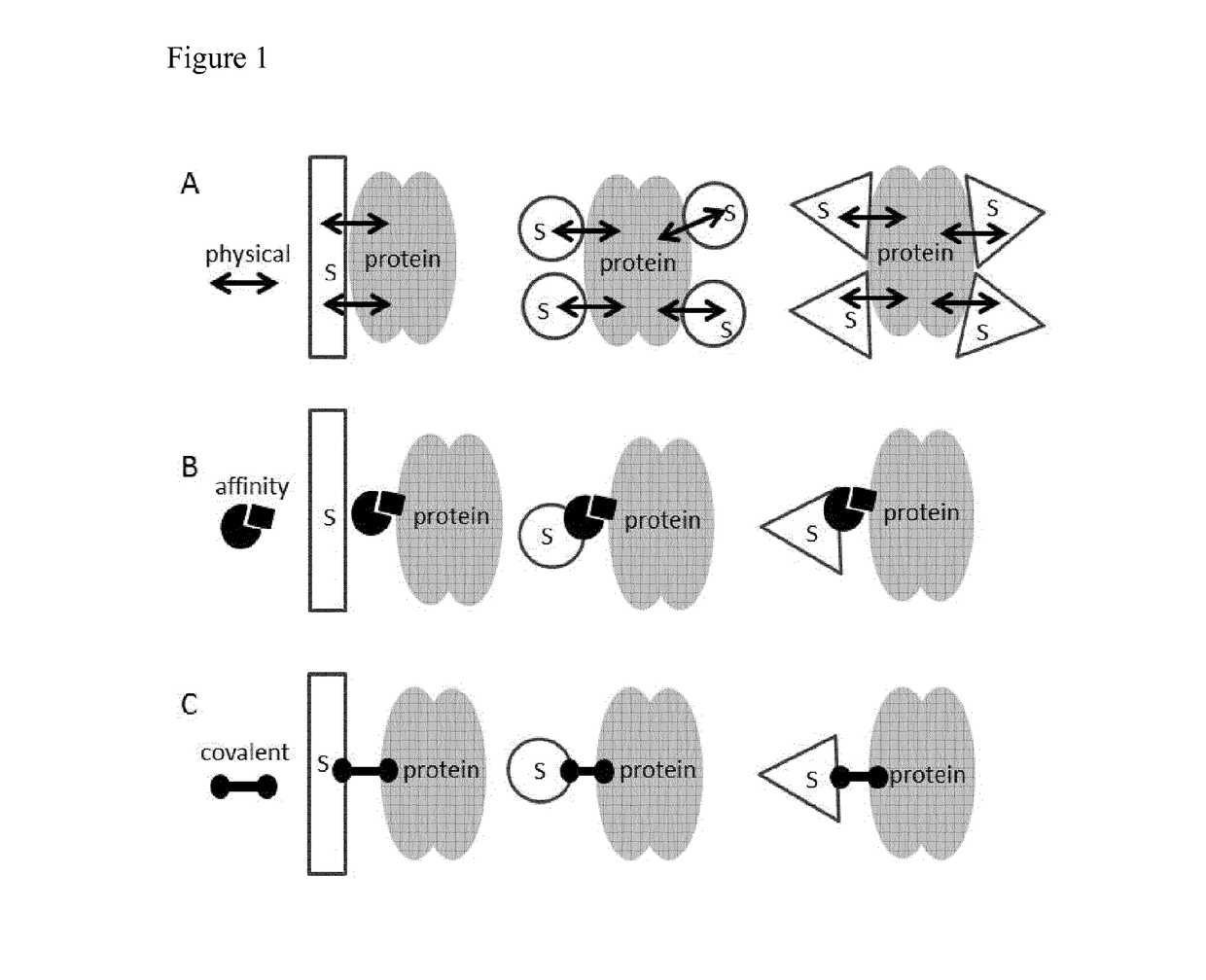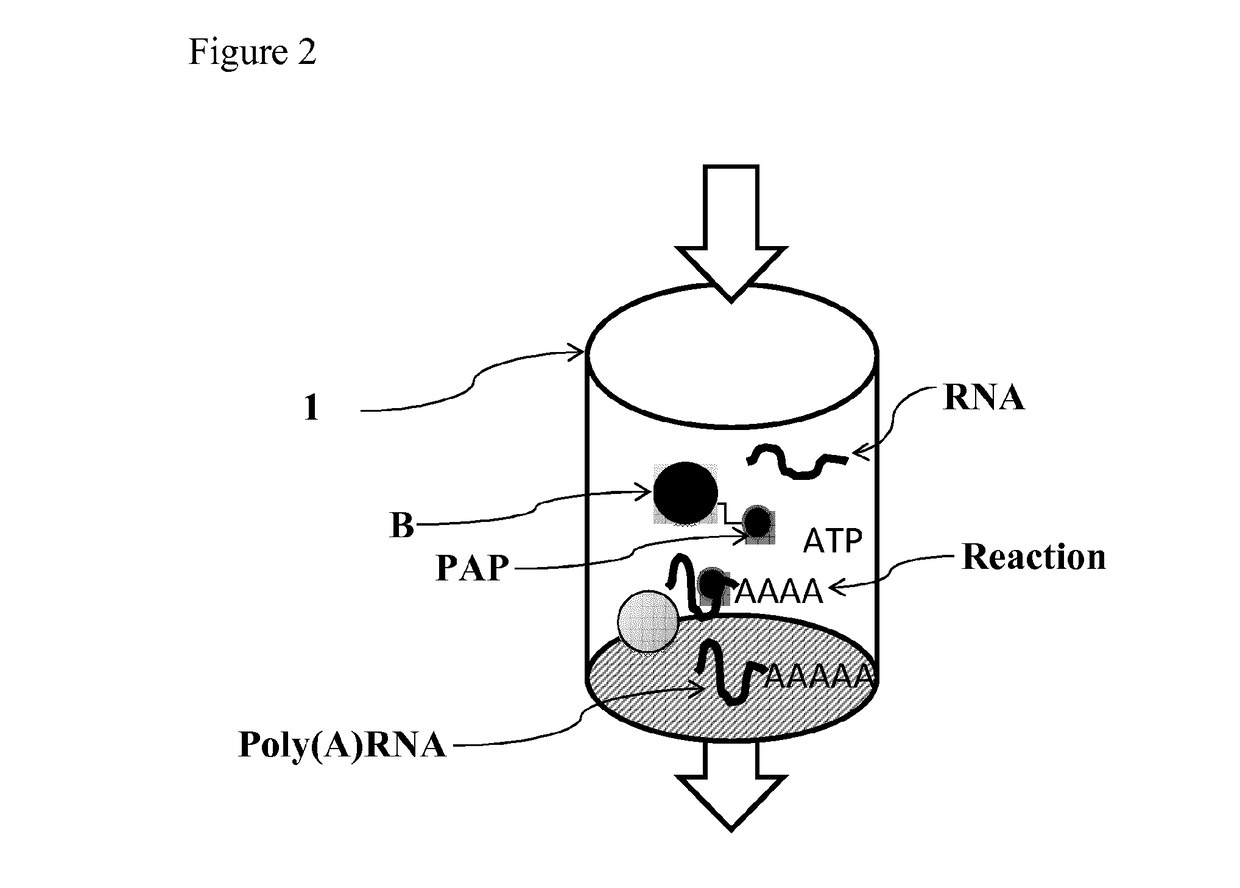Immobilized poly(n)polymerase
a polymerase and immobilized technology, applied in the field of poly(n) polymerase (pnp), can solve the problems of rna being a rather unstable molecular species, the risk of application of dna to a patient, and the inability to fully absorb rna, etc., to achieve the effect of more time-effective and cost-effective separation
- Summary
- Abstract
- Description
- Claims
- Application Information
AI Technical Summary
Benefits of technology
Problems solved by technology
Method used
Image
Examples
example 1
Immobilization of Escherichia coli Poly(A)Polymerase I on Thiopropyl Sepharose 6B
[0358]The goal of this experiment was to obtain stably immobilized and functional poly(A)polymerase (PAP). Escherichia coli PAP mutants were generated, mutant 1 (referred to as “mut1”), mutant 2 (referred to as “mut2”) and mutant 3 (referred to as “mut3”) and characterized for enzymatic activity. As immobilization strategy, immobilization onto Thiopropyl Sepharose 6B solid supports was tested. The reaction conditions, respectively the pH, were chosen as such the formation of disulfide linkages (R-S-S-R) via sulfhydryl groups (—SH) via cysteine residues present on the PAP mutant proteins was promoted.
[0359]The obtained immobilized PAP mutants were further characterized and tested for enzymatic activity (i.e. their polyadenylation activity), and stability (see Example 2-3) and also used in a polyadenylation reactor (see Example 4). A detailed description of the immobilization procedure and a discussion of...
example 2
Long-Term Activity Tests of Immobilized PAP-TS mut2
[0375]2.1 Experimental Procedure
[0376]The immobilized PAP-TS mut2 (“TS” denotes immobilization onto Thiopropyl Sepharose 6B) (obtained according to Example 1) was further tested for its enzymatic activity in a poly(A)polymerase tailing assay using a 60 nucleotide long model RNA (according to SEQ ID: 202; synthesized by Biomers, Ulm, Germany, HPLC-PAGE) as RNA template was performed. 1 μg RNA template was incubated with ATP and PAP-TS mut2 or the respective soluble PAP mut2 for 1 h at 37° C. in tailing buffer (from A-Plus™Poly(A) Polymerase Tailing Kit, Biozym Scientific GmbH, Hessisch Oldendorf, Germany; +1 mM ATP, 2 U Ribolock™, Thermo Fisher Scientific, Waltham, Mass., USA) followed by heat-inactivation at 80° C. for 5 minutes and storage on ice. The polyadenylated RNA was analyzed on a 15% TBE-UREA PAGE and subsequently stained with Sybr® Gold (Thermo Fisher Scientific, Waltham, Mass., USA) to assess the polyadenylation activity ...
example 3
Heat-Stability and Activity Tests of Immobilized PAP-TS mut2
[0383]3.1 Experimental Procedure
[0384]To further characterize the stability and activity of immobilized mutant protein mut2 (PAP-TS mut2; obtained according to Example 1), the soluble protein PAP mut2 and the immobilized protein PAP-TS mut2 that were stored at 4° C. for 22 days (cf. Example 2) were additionally subjected to heat stress for up to 180 minutes at 37° C. in tailing assay buffer. Subsequently, heat stressed PAP mut2 and PAP-TS mut2 were characterized for enzymatic activity in a poly(A)polymerase tailing assay (performed according to Example 2); the tailing reaction was started through addition of the RNA template and ATP. The results of the experiment are shown in FIG. 8.
[0385]3.2 Results and Discussion:
[0386]As shown in FIG. 8, a noticeable increased heat-stability was observed for immobilized PAP-TS mut2 compared to the soluble mut2. The immobilized PAP-TS mut2 does not show a decrease in polyadenylation activ...
PUM
| Property | Measurement | Unit |
|---|---|---|
| Fraction | aaaaa | aaaaa |
| Mass | aaaaa | aaaaa |
| Substance count | aaaaa | aaaaa |
Abstract
Description
Claims
Application Information
 Login to View More
Login to View More - R&D
- Intellectual Property
- Life Sciences
- Materials
- Tech Scout
- Unparalleled Data Quality
- Higher Quality Content
- 60% Fewer Hallucinations
Browse by: Latest US Patents, China's latest patents, Technical Efficacy Thesaurus, Application Domain, Technology Topic, Popular Technical Reports.
© 2025 PatSnap. All rights reserved.Legal|Privacy policy|Modern Slavery Act Transparency Statement|Sitemap|About US| Contact US: help@patsnap.com



